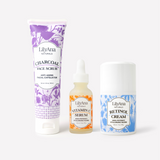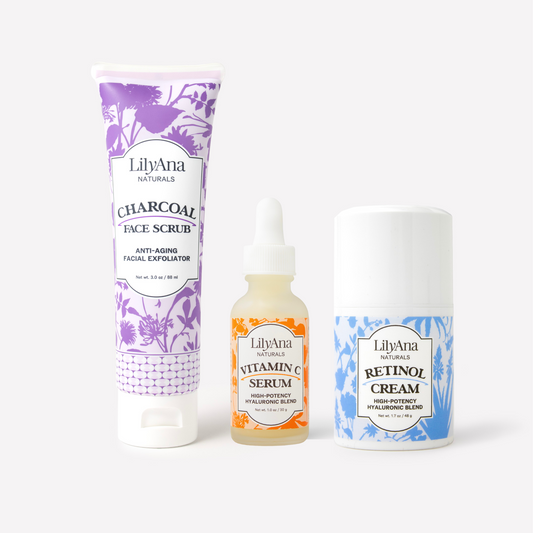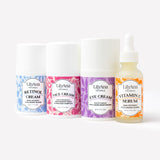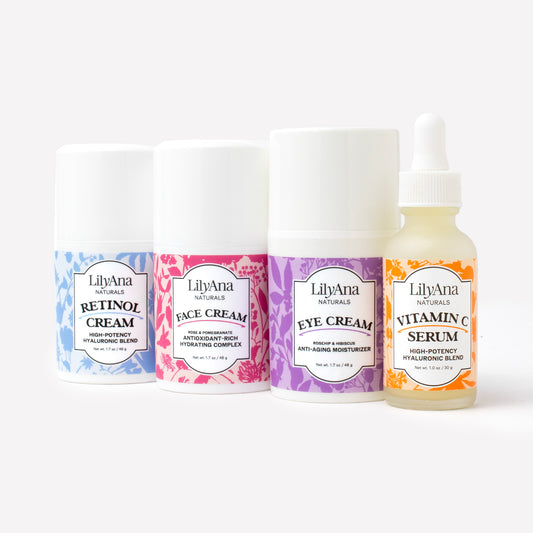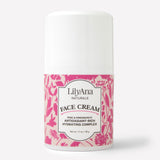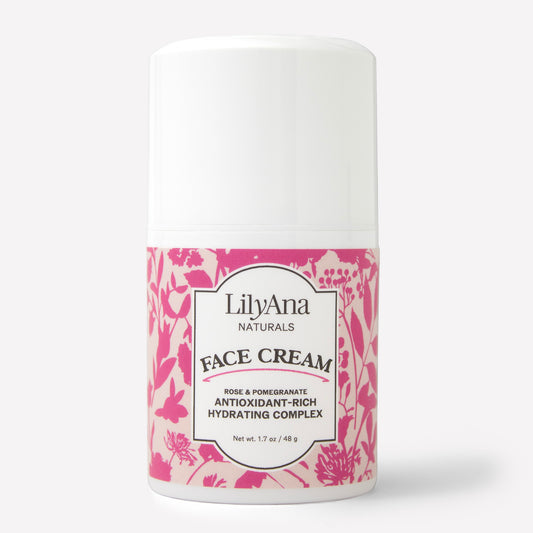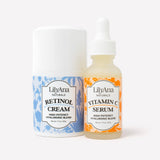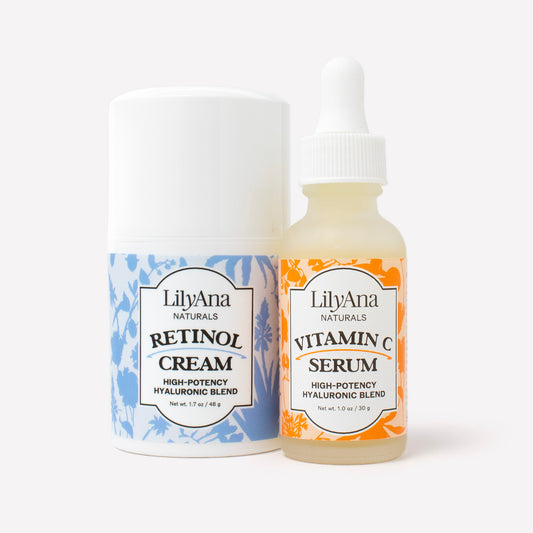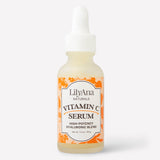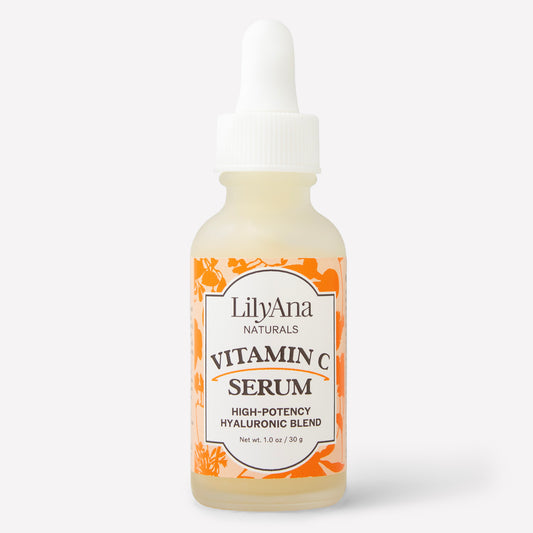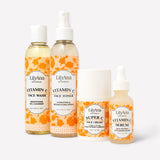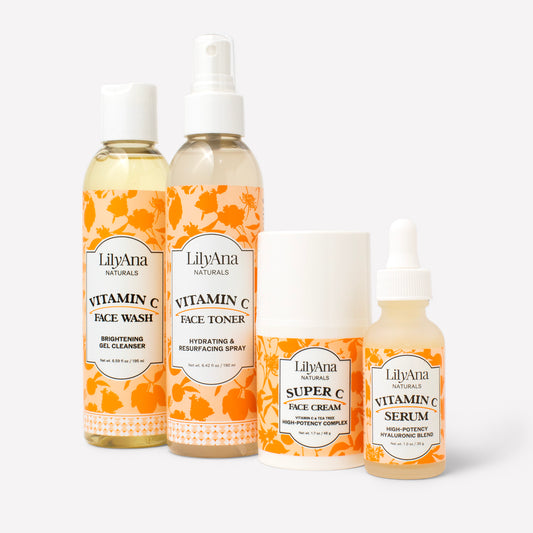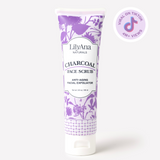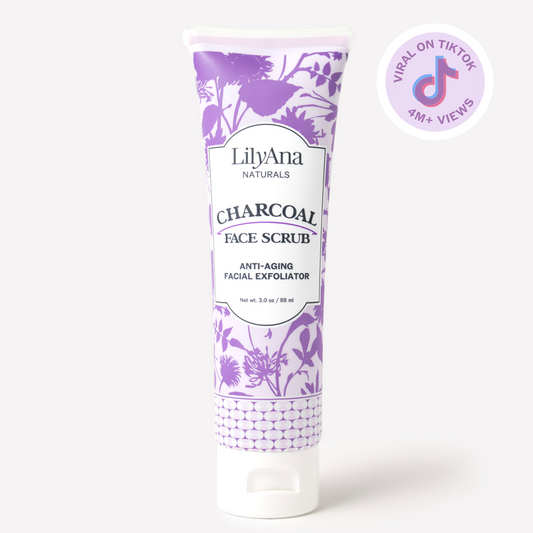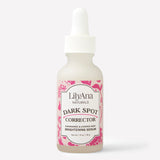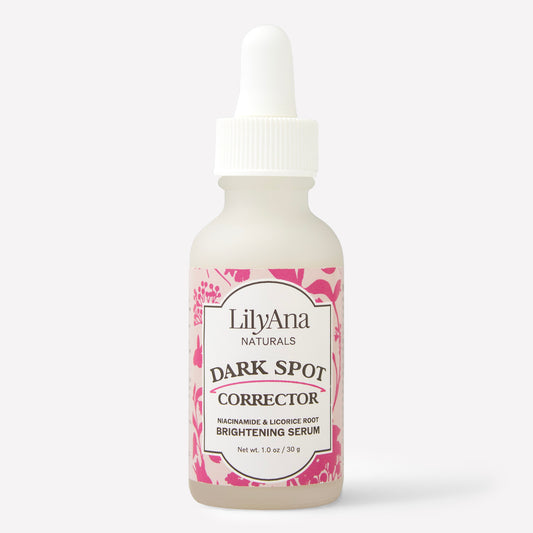You’ve heard all about breaking out, but have you heard of skin purging? Skin purging is the pimple-ridden irritation that occurs after we use specific products.
It’s easy to confuse skin purging with breaking out. Both result in swelling, blemishes, and maybe even embarrassment. But while breaking out is caused by clogged pores, skin purging is caused by specific ingredients in our skin care products.
And while breakouts can leave scars and take a while to fully heal, skin purges actually leave our skin looking much clearer and more youthful. In this article, we discuss what causes skin purging, how to distinguish a skin purge from a break out, and the best ways to treat a skin purge.

What Is Skin Purging?
‘Skin purging’ is a term which refers to the rapid skin cell turnover rate that occurs after the skin’s reaction to some specific active ingredient. In other words, during a purge, the skin is encouraged to shed its dead skin cells and all the gunk that has built up within them.
Said “gunk” could include excess sebum (oils), skin flakes, dirt, bacteria, pus, and more. As the top layer of skin cells are sloughed away, fresh skin cells rise to the surface. The result is clearer, cleaner, and younger-looking skin.
Skin purging looks different from person to person. Generally speaking, you may see whiteheads, cysts, pustules, blackheads, papules, and microcomedones (those pesky “underground pimples”). It is also common for dry skin to start peeling away.
It’s important to note that skin cells are constantly shedding and replacing themselves naturally. New cells are created in the lowest layer of the epidermis, while those cells on the top layer die off and exfoliate.
Though the process of skin purging may sound gross and inconvenient, it is actually a good thing. Skin purging is proof that your skincare products are working.
What Causes Skin Purging?
Skin care products often include ingredients that tend to incite accelerated exfoliation. Exposing your skin to these ingredients is what usually prompts a bout of skin purging. So what ingredients can bring on a skin purge?
Retinoids are a major contributor to skin purging. These include tretinoin, isotretinoin, and retinol, the latter of which is often prescribed to treat acne and aging skin.
Exfoliating acids are also common culprits when it comes to causing skin purging. Finally, skin purging can also be prompted by the use of facials that involve chemical peel components.
What Does It Mean If You Are Breaking Out?
On the other hand, the term “breaking out” refers to the clogging of your skin’s pores. When your pores fill up with dead skin cells, oils, and bacteria, they become clogged and inflamed. Eventually, the clog gets pushed to the surface of the skin, and forms whiteheads, blackheads, pimples, and cysts.
While a skin purge is prompted by the use of certain ingredients, breakouts are caused by all sorts of factors. Common offenders include skin care products like liquid foundations and oil-based makeup, some acne treatments, diet, dehydration, stress, smoking, sun exposure, and insufficient sleep, among a slew of other possibilities.
Skin Purging vs. Breaking Out: How To Tell The Difference
Because both skin purging and breaking out often result in blackheads, whiteheads, and “zits,” it can be easy to confuse the two. Both skin purging and breakouts can be caused by use of specific products, especially new skin care products which your skin isn’t used to.
While skin purging will be prompted by those ingredients designed to encourage skin cell turnover, breakouts are caused by ingredients that tend to clog skin pores, or irritate in other ways. Are you seeing pimples and other nastiness in places you frequently break out? Then it’s probably a breakout.
Is it happening in a new area, where you don’t usually experience breakouts? Then it’s probably purging. Are there mostly blackheads and skin-colored bumps? Then you are likely experiencing a purge. Breakouts tend to consist of more cysts, pustules, and traditional “zits.” Are the individual pimples disappearing faster than usual? Then it’s probably a purge.
Are the individual pimples taking eight to 10 days to appear and shrink? Then you are probably breaking out. Did a product other than acid, retinoid, or peel cause the issues? Then it’s either a breakout or a reaction of some sort.
Generally speaking, a skin purge is caused only by the use of acids, chemical peels, or retinoids. The irritation will occur in the same place you are used to breaking out (jawline, t-zone, etc), but each pimple will come and go in fewer than 8-10 days.
How To Treat Skin Purging vs. Breaking Out
If you are experiencing a breakout, then there are a few things you can do to soothe your skin and speed up the healing process. First, make sure you are washing your face thoroughly every morning and every night before bed. This will get rid of any excess oils, dirt, and makeup that could further clog your pores.
Drink lots of water to keep your skin hydrated. Dehydration spurs the body to create excess oil, which can lead to the clogging of pores and further breakouts. Finally, avoid touching your face. Between cell phones, door handles, and everything else we touch each day, our hands are constantly full of dirt and bacteria.
Wash your hands often, and try not to touch your face so that your breakout heals quickly. But if you determine that your skin is purging, then using harsh products during a purge could worsen any inflammation. Indeed, because there really isn’t anything you can do to shorten the process of skin purging, treating a skin purge is more about what not to do.
Stay away from any kind of drying products, such as exfoliating acids or spot treatments. These types of products contain benzoyl peroxide and salicylic acid, both of which prompt skin purging. If you are already in the midst of a skin purge, then there is no reason to continue with these types of products.
And most importantly, don’t pick at any acne. Not only is popping or picking at your pimples likely to extend the skin purging process, but it could also lead to scarring.
So what is the best way to treat skin purging? Continue with a gentle skin care routine that avoids the components described above. If your skin is not overly sensitive, then you can also try a gentle facial designed to clear out pores, then infuse them with targeted serums.
But if you have sensitive skin, then be sure to check with your dermatologist before trying this during a skin purge. You can also make your skin more comfortable by limiting sun exposure, wearing sunscreen each and every day, keeping your pillowcase and bed sheets clean, and resisting the urge to pick. If your skin is experiencing dryness, then it is okay to use a gentle moisturizer.

Frequently Asked Questions About Skin Purging & Breaking Out
1. How long does your skin purge before it clears up?
The skin renewal process takes about 28 days, While most cases of skin purging clear up in about two weeks, skin purging can actually last four to six weeks.
While this may seem like a long time, skin doesn’t purge at the same severity for the entire 2-6 weeks. If you find that your skin is still purging after six weeks, then reach out to your dermatologist. You may need to make an adjustment in your skin care routine.
2. Is skin purging a good thing?
Well, skin purging isn’t a bad thing. Even when left alone, the skin sheds and revives itself with new skin cells every 28 days. What we refer to as a skin purge is just this same process sped up. Therefore, it’s completely natural. By the end of a skin purge, the skin looks clearer, cleaner, and younger, and that’s rarely a negative thing.
3. How long does a skin breakout last?
Pimples can take a whopping eight weeks to fully surface before they even appear, plus additional time to fully heal. Since you can experience multiple breakouts at once, it can be difficult to clear your skin all at once.
4. What should you do if your skin won’t stop breaking out?
Acne and breakouts are common, and aggressive acne can be tough to get rid of. There are lots of things you can try to clear up acne, two of which are making sure you have a gentle, foaming cleanser with which to wash your face, and trying new products specifically designed to clear up clogged pores.
5. Are there benefits to skin purging?
Though it may be hard to believe, skin purging is actually a sign that your skincare is working and doing the right thing. The nastiness of the skin purging process ultimately results in clearer, cleaner, and more youthful looking skin.
6. Can you avoid skin purging?
Retinoids, acids, and peels can be beneficial components to a skin care routine, especially for those who are prone to acne. If you want to use these products, but don’t want to deal with a skin purge, then allow your body time to adjust to the products through the “ease in” method.
For the first week you use retinoids, apply just twice. During the second week, apply three times. Eventually, work your way up to daily use. The same “ease in” method can be used for exfoliating acids and other exfoliants.Begin by applying just once a week.
After a couple of weeks, you can use an exfoliating acid twice or three times over the course of seven days. However, it’s best to never apply an exfoliating acid more than three times per week, as this could lead to over-exfoliating. Finally, chemical peels should never be used more than once a month.
The Bottom Line
Unlike breakouts, which are the result of pores clogged with excess oil, dead skin cells, and bacteria, a skin purge is the rapid turnover of skin cells brought on by certain skin care ingredients. Retinoids, chemical peels, and exfoliating acids are all common inciters of skin purging.
A skin purge will last anywhere from four to six weeks, while breakouts can last until properly treated. Perhaps frustratingly, there isn’t much we can do to speed up the purging process, though some hydrating facials can help. On the other hand, there are multiple ways to treat breakouts.
As annoying and uncomfortable as a skin purge can be, it is ultimately a natural -- albeit speedier -- part of the body’s process. By the end of a skin purge, you are bound to have clearer skin that is healthier and more youthful looking.
